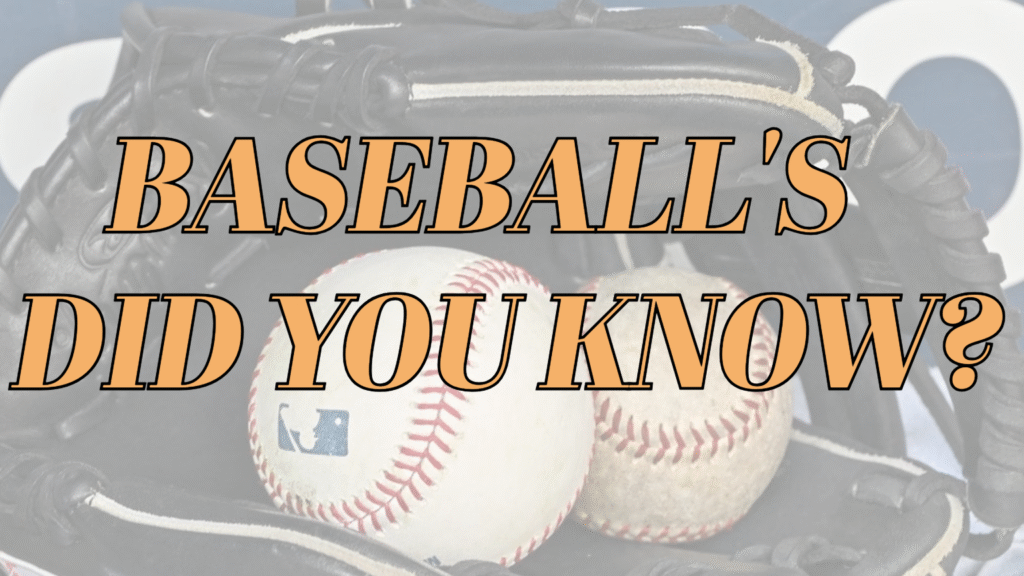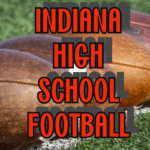July 10, 2025
CARL HUBBELL MAKES HISTORY
July 10, 1934, The second All-Star Game belonged to Carl Hubbell. On the afternoon of July 10 — on the mound of his home park, New York’s Polo Grounds — he turned in perhaps the most spellbinding bit of pitching ever seen in baseball.
Hubbell began the game by getting into hot water — very hot. Charlie Gehringer led off with a single and moved to second on an outfield bobble. Heinie Manush drew a walk and King Carl was facing Ruth, Gehrig and Foxx with two on, none out.
Hubbell began turning over his screwball with uncanny precision. It was a delivery designed to break the backs of free swingers. Ruth (who three days later hit his 700th homer), took a called third strike, looking “decidedly puzzled,” according to one account. Gehrig went down swinging mightily and warned Foxx on his way back to the dugout, “You might as well cut. It won’t get any higher.” The advice didn’t help; Foxx went down on strikes.
In the second, Hubbell faced Al Simmons (who went into the 1934 season with a 10-year .355 average) and he struck out, too. Hubbell made it five in a row when he struck out Joe Cronin.
Bill Dickey ended the string with a single to left. “I was happy to see that,” Gehringer said. “It was starting to get embarrassing.” Hubbell ended the inning, though, by striking out Lefty Gomez.
Hubbell’s achievement of striking out, in succession, five of baseball’s greatest hitters will always be the glowing memory of the ’34 All-Star Game. And the capstone of Hubbell’s career. After three scoreless innings he leaves with the National League ahead, 4 – 0. The American League rallies, scoring nine runs off Lon Warneke, Van Mungo and Dizzy Dean, while Mel Harder pitches five shutout innings in relief of Red Ruffing to hold the lead. Frankie Frisch and Joe Medwick hit homers. Earl Averill’s three RBI are decisive for the AL’s 9 – 7 victory. Hubbell himself will gain election to the Hall in 1947.
Did you know?
July 10, 1936 At Forbes Field, Chuck Klein hits 4 home runs in one game, including the tie-breaker in the 10th, helping the Phillies defeat the Pirates, 9 – 6. The Indianapolis, Indiana native barely misses hitting an additional homer in the 2nd when right fielder Paul Waner catches his drive against the wall. At 36, Klein is the oldest player ever to hit four homers in a game, and the first National Leaguer in the 20th century to do so.
TRIVIA:
Whose American League record of twenty-four consecutive regular-season victorious decisions did National Leaguer Carl Hubbell tie?
Hint: #1 After returning from military service he (not Hubbell) re-invented his pitching style to account for advancing age and accumulating minor injuries.
Hint: #2 His veteran (literally) leadership helped turn a second-division team into a pennant-winner.
Hint: #3 He was a decent-hitting pitcher and even became the first player to hit a home run to center field in the Polo Grounds.
July 10, 1945, ten new members are inducted into the National Baseball Hall of Fame. The inductees are catcher Roger Bresnahan, first baseman Dan Brouthers, outfielder Fred Clarke, third baseman Jimmy Collins, outfielders Ed Delahanty and Hugh Duffy, shortstop Hughie Jennings, outfielder King Kelly, first baseman Jim O’Rourke, and catcher Wilbert Robinson.
Roger Bresnahan is generally regarded as the most famous catcher of the dead-ball era. In a time when catchers rarely batted higher than 8th, Bresnahan was a leadoff hitter due to his high on-base percentage and speed that belied his 200-pound frame. He broke into the majors as a pitcher, throwing a six-hit shutout in his first appearance but had the ability to play every other position. Perhaps his most notable contributions to the game were in the development of protective equipment. Bresnahan is credited for the development of the batting helmet, shin guards for catchers, and improving the safety of the catcher’s mask. Despite initial ridicule and protest, these safety measures all caught on and are standard equipment in today’s game.
Hughie Jennings, for his career, stole 359 bases, walked 347 times, and holds the record for a number of times hit by a pitch at 287. Each of these totaling more than his meager strikeout total of 233.
Hugh Duffy holds the single-season record with a .438 batting average. In 1894, he amassed 234 hits in only 124 games, while playing for the Boston Beaneaters. Duffy collected 50 doubles and 18 home runs during that amazing season!
July 10, 1947 — During the first game of a twin bill in front of 47,871 Tribe fans, Don Black retires the final ten A’s batters he faces to record the first no-hitter in the history of Cleveland’s Municipal Stadium. The crowd, the largest ever to witness a no-hitter, endures the rain and six walks as the Indians right-hander completes the 3-0 victory, the eighth no-no in franchise history.
July 10 1948 Satchel Paige gets his first major league win as Larry Doby hits a two-run homer and the Indians tack on another run in the 9th to beat Philadelphia, 8 – 5
July 10, 1951 In the second All-Star Game played in Detroit, the National League beat their AL rivals at Briggs Stadium, 8-3. Although their team’s circuit loses, the 52,075 Motor City fans witness home runs hit by hometown favorites George Kell and Vic Wertz. The National League was powered bye four home runs from Stan Musial, Bob Elliott, Ralph Kiner and Gil Hodges. Kiner hits a home run for the third year in a row.
July 10, 1956 At Griffith Stadium In the 1956 All-Star Game, Ken Boyer of the Cardinals makes three sparkling plays at 3B and gets 3 hits as the National League defeats the American League, 7 – 3. Willie Mays, Mickey Mantle, Ted Williams and Stan Musial all homer. Mays’s pinch-hit two-run home run off Whitey Ford is his 7th straight hit against the Yankee lefty.
Bob Friend and Warren Spahn were both nursing a 5-0 shutout until the sixth inning when Spahn was rocked by the first three batters he faced: Nellie Fox, who hit a single, Williams, who hit a home run, and Mantle, who followed with another home run. Had there been an All-Star Game Most Valuable Player Award during the 1956 Midsummer Classic it would have “probably” gone to Boyer who went three for five, drove in a run, scored a run, and made three truly spectacular fielding plays during the game. Yankee Manager Casey Stengel continued to suffer at the hands of the senior circuit. He was 1-5 in All-Star games and finding it impossible to match his opponent’s momentum.
July 10, 1962 John F. Kennedy returns to Robert F. Kennedy Stadium and becomes the first president to throw the ceremonial first pitch at an All-Star Game. In April, JFK, who will stay for the entire contest, threw the ceremonial first pitch at the Senators’ home opener, the first game played in Washington’s new $24-million ballpark.
A highlight of the game was the first presentation of the Arch Ward Trophy. It was first presented in 1962 as a tribute to the man who helped found the All-Star Game in 1933. That first presentation went to Leon Wagner of the Los Angeles Angels (second game MVP) and to Maury Wills of the Los Angeles Dodgers (first game MVP), because two Midsummer Classics were played.
The spotlight on this game belonged to Maury Wills. Entering the lineup in the sixth inning to pinch-run for Stan Musial, he stole second then scored the first run of the game off a Dick Groat single. In the eighth inning, Wills reached base by a single. He rounded second on a short single hit by Jim Davenport to left field. Wills reached third base safely and scored on a foul out to right field moments later. This performance earned him the first All-Star Most Valuable Player Award. Willie Mays’s makes an amazing game-ending catch, and Roberto Clemente was a key contributor with three hits in the game.
July 10, 1979 Philadelphia’s Del Unser homers in his 3rd consecutive pinch-hit appearance (the prior ones were on June 30th and July 5th) to tie the major-league record set by Lee Lacy in 1978. Unser hitting for Larry Bowa hits a 3 run walk-off shot vs future hall of farmer Rollie Fingers. Scoring Bob Boone and Bake McBride. The Phillies beat the Padres, 6 – 5.
Unser’s home run on June 30th, a 2 run shot tied the game at 4 with 2 outs in the 9th. His home run, a 2 run shot on the 5th of July in a 3-2 loss were the only 2 runs the Phillies scored.
The streak ended 2 days later, July 13, when Unser was Intentionally Walked by Fingers. The first time Unser was retired as a pinch hitter following the streak was July 23, Also by Fingers (strikeout).
July 10, 1982, Larry Parrish of the Texas Rangers tied a major league record by clubbing his third grand slam within the span of a week. Parrish’s latest slam lifted the Rangers to a 6-5 win over the Detroit Tigers.
Parrish hit his slam on a 1-0 pitch from Milt Wilcox after Dave Hostetler was intentionally walked to load the bases. Parrish then sent a high drive fivi or six rows into the left-field seats.
‘It says a lot for the guys coming up before me,’ said Parrish. ‘How many times do you get to come up with the bases loaded?’
Entering this season, Parrish owned just one grand slam in 967 games. He says some extra work recently helped him improve his hitting.
‘I told Fred (pitching coach Koenig) that I wasn’t hitting good, so we went out and took some extra batting practice,’ said Parrish, who added he did not fault the Tigers for intentionally walking Hostetler. ‘It was a situation where Hostetler is hitting well. Most home runs come when you are not expecting it. I said, ‘Gee, they can’t be expecting me to hit another grand slam.”
Parrish hit his first grand slam Sunday at Oakland off reliever Fernando Arroyo. His second came Wednesday night at home against Boston’s Mark Clear.
In 1968, Detroit’s Jim Northrup also hit three grand slams in a week.


